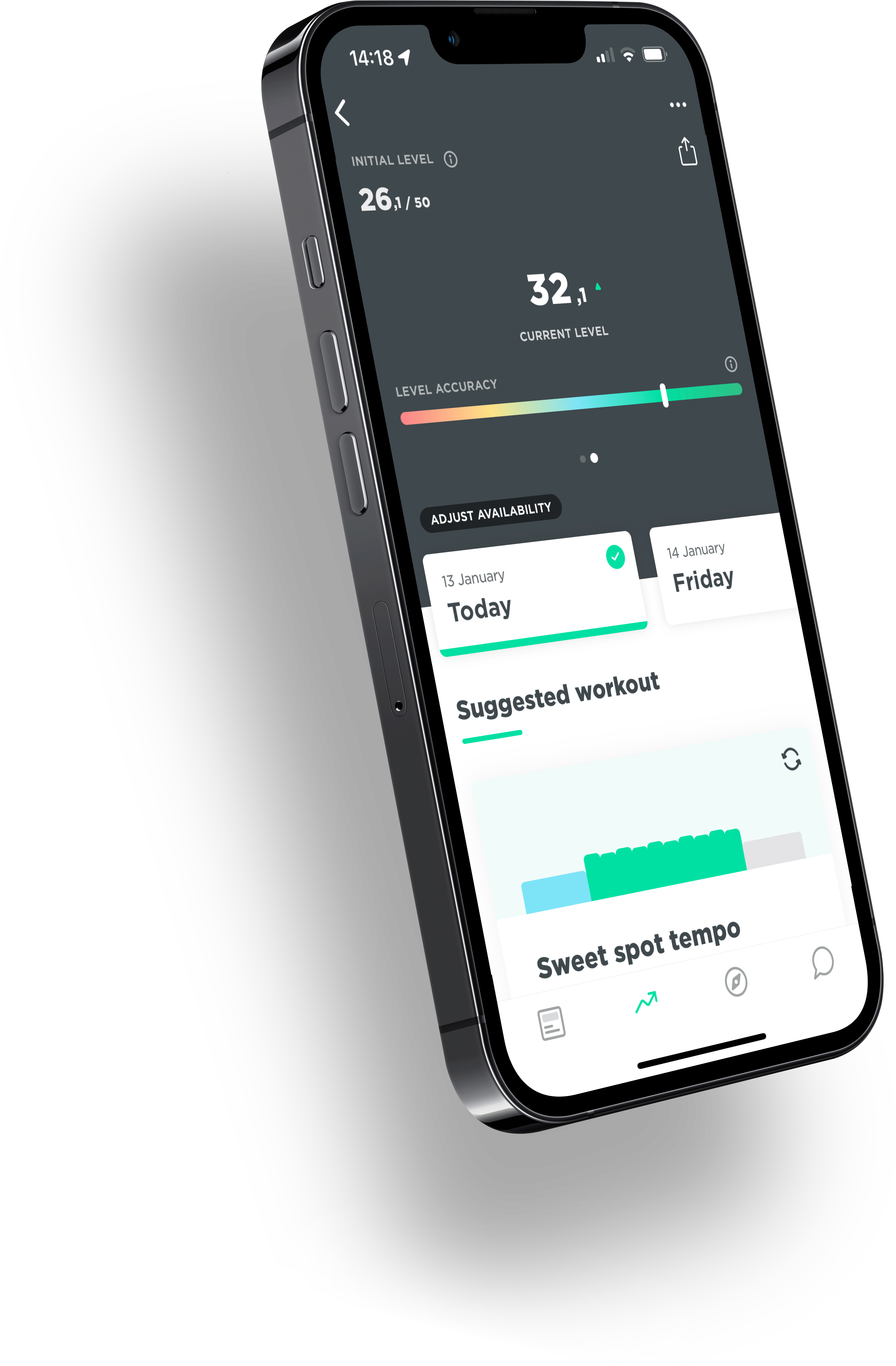It often seems so easy. You would say that when you do exactly what it says, you can’t go wrong. Unfortunately, it’s not that simple and we still see experienced cyclists getting their interval training wrong. In this article we give you tips and tricks to help you make the most out of your interval training.
Preparation is half the work
While it sounds rather obvious to do it, you’ll be surprised how often people skip reading the training instructions. Sometimes a rider just exports the training to a program like Zwift or to the Garmin, but that is not always necessary. For example, you can easily memorize 5 repetitions of 6 minutes, can you not? Initially, you could write your performance zones on a piece of masking tape that you stick on the top tube or the stem of your beloved steed, but after a few workouts you will know your zones. So doing a bit of homework helps and avoids that you spend as long on exporting a workout file to your headunit, as on the workout itself. In addition, be aware of the training goal. For example, if it is a sprint training, then the average speed over the entire workout is not of interest at all.
Warming-up
The purpose of a warm-up is to prepare the body to perform. So this is especially important for efforts where you need to perform right from the gun, like a time trial. A warmed-up body performs better. Now, training is not about delivering the best performance, it’s about training well. Therefore, build up the first few minutes slowly and start low in the prescribed zone. However, there is no need to overdo it. 5 or 10 minutes can be enough before the real training starts.
Accurate zones
Training session intensity is split up in zones. These zones are determined on the basis of your threshold heart rate or FTP (power output). This threshold can be determined in an exercise test in a sports lab or by doing a 20-minute field test yourself. It is important that this threshold is up-to-date. A trained person’s threshold heart rate threshold will remain fairly constant. A beginner can see a rise in this heart rate after a few months of training, while the reverse can also happen. The maximum heart rate and thus also the threshold-HR decrease with age.
In power terms, the training goal is to improve your FTP. A 20-minute test is therefore recommended every 2 to 3 months to check on the progress. An annual exercise test in a laboratory is also recommended because it encompasses a more general health check and not just measures your power output.
Listen to your legs
When you are training, always listen to your body first, then pay attention to the power output and finally look at the heart rate. There are so many variables apart from effort that influence your heart rate (sleep quality, caffeine consumption, stress, etcetera) that your heart rate is a poor tool to measure the intensity of your efforts. Power output is a far more accurate and stable measure so heart rate zones and power zones will not always match. You should be aware that the ultimate goal is to train at a certain intensity and activate the specific energy system that are associated with that intensity. Achieving a certain heart rate is not a goal in itself and at best only a means. Training at a certain power level and thus stimulating a certain energy system is far more accurate and thereby conducive to training well. This is the big difference between training on heart rate and on power.
The pitfall with heart rate training.
When you’ve eaten too little, have become dehydrated, gotten too little sleep, trained hard recently, drank a lot of coffee or are stressed at work: all these factors impact your heart rate. When you are well rested or have not trained for a while, your heart rate goes quite high, while the training feels relatively easy. Listen to that feeling first and to the heart rate second. Because every day is different, don’t aim for your HR to be exactly in the middle or near the top of an intensity zone. On a poor day you will be in the middle of the zone while on a good day you might be near the upper end of the zone’s bandwidth.
Especially with power training, it’s about keeping the efforts constant across the stints and being able to complete the prescribed number of repetitions. Therefore, always start the first repetition a little cautious. If you feel that it is going well, you can up the pace and gun for the top of the zone. For this very reason, always training in ERG-mode on your indoor trainer is not a good idea at all. The ERG-mode ensures that the power is kept exactly constant in the middle of the zone. That might be nice and easy, but on a bad day you cannot drop the power a little bit easily, nor push a little harder in the last few repetitions if you feel good.
Training with heart rate or power
Workouts in JOIN Cycling are often prescribed more precisely in power terms than in heart rate terms. This also means that when you train on heart rate, you should listen more carefully to your body and train higher or lower in the zone based on that. Making these heart rate zones very small or very precise in the descriptions of the workouts makes no sense for heart rate based training, where instructions whilst training on power can be more precise.
Cooling down
An interval training should never end right after the intensive intervals. It is always advisable to ride for at least 5 more minutes with a light gear. The higher the intensity of the training, the more waste products (lactic acid, etc) will have been produced that can be removed from your muscles with this “active recovery”. If you worry that your Strava averages will suffer from that cool down, our simple tip is to turn off the Garmin of Wahoo on the final, easy 5 to 10 minutes home stretch!
Evaluation
It’s important to know whether you’ve done your workout properly. If, for example, the heart rates were outside the prescribed zones, but the feeling and power were not, there is probably an explanation for this. In sprint training you look at the speeds and power of the sprints. Achieving certain heart rates is a pointless goal because the sprints are too short. In the case of longer endurance training sessions with tempo intervals, the relationship between power and heart rate can be interesting: you can compare it to a similar workout a few weeks earlier to see if you are making progress.


